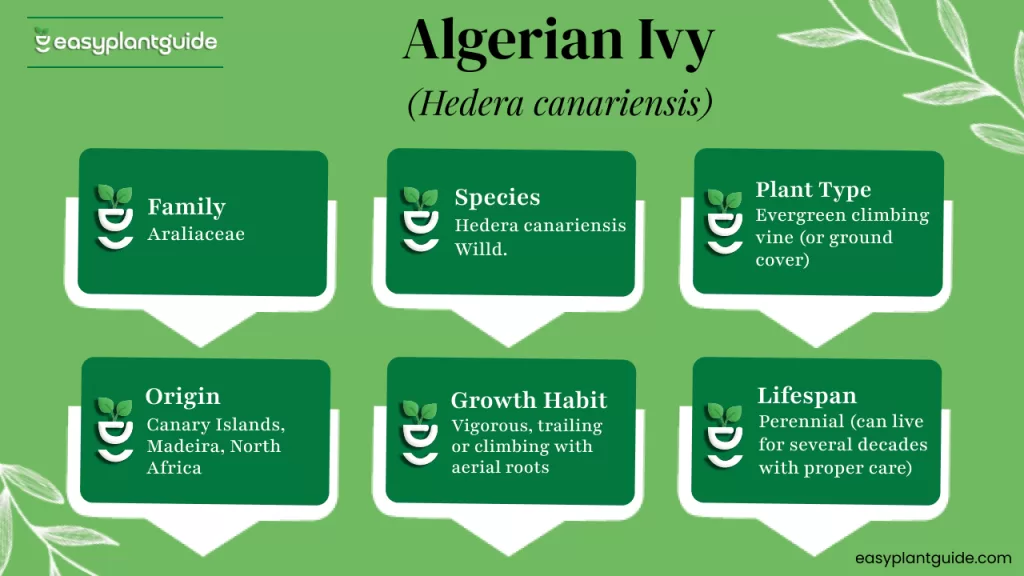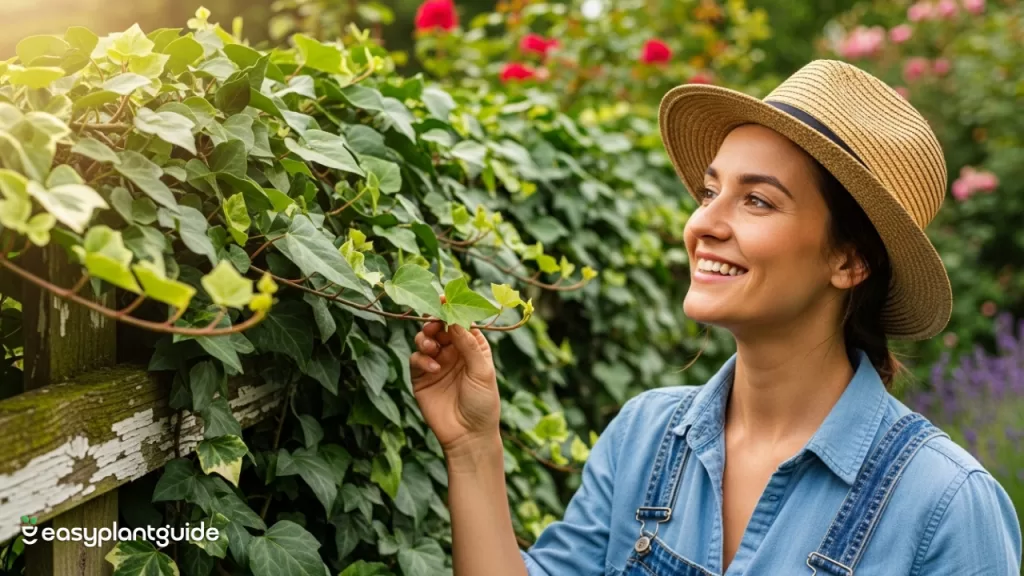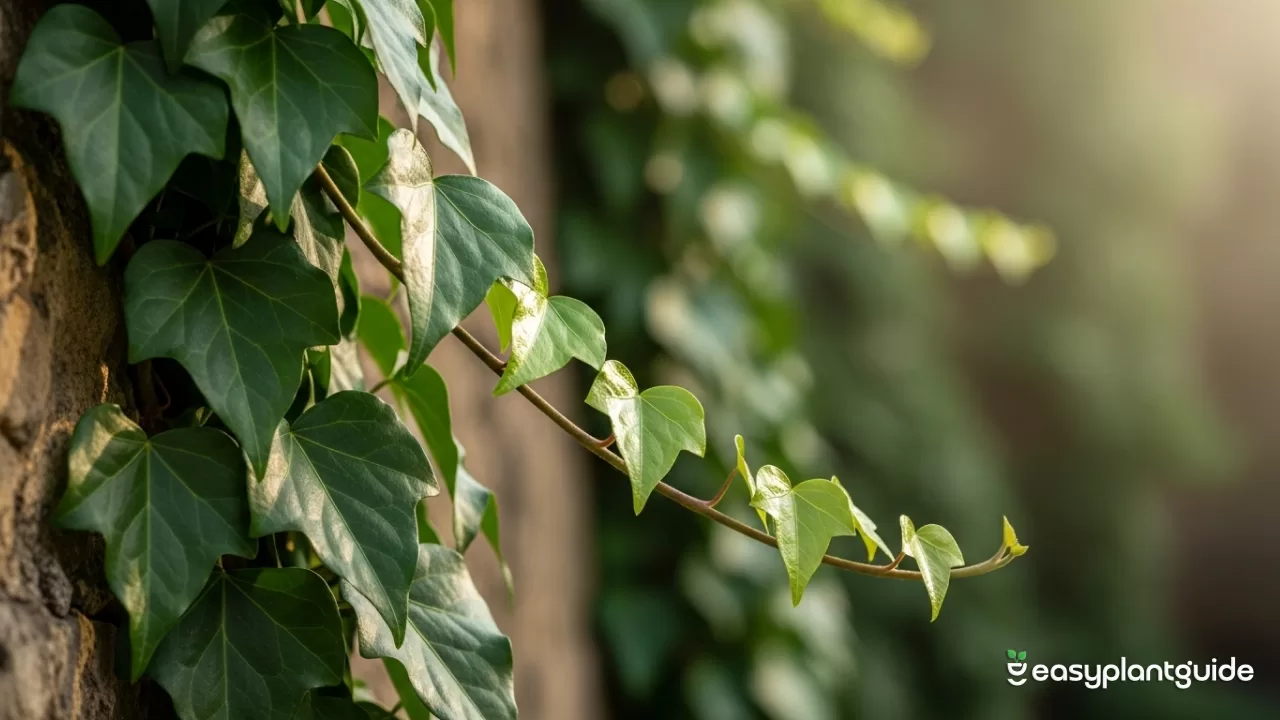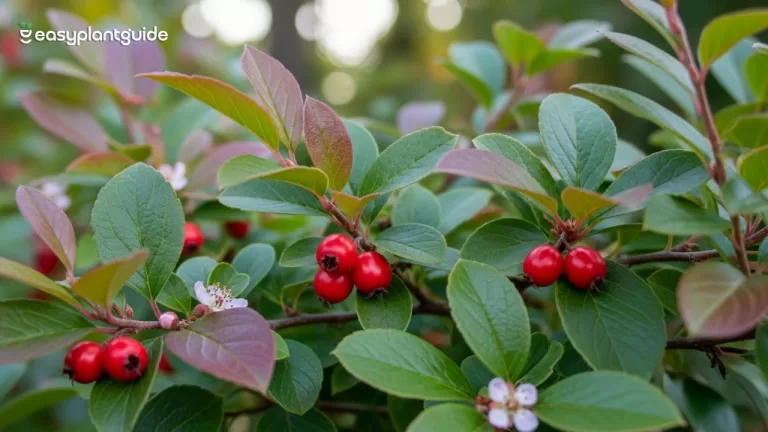Hedera Canariensis: 7 Stunning Benefits That Will Amaze You
If you’re looking for a plant that’s both tough and beautiful, Hedera canariensis—commonly known as Algerian ivy or Canary Island ivy—might just steal your heart. With its glossy green leaves and fast-growing nature, this climbing vine is more than just an ornamental addition; it’s a multitasking superstar. Let’s explore everything you need to know about this lush evergreen, from care tips to propagation secrets.

What Is Hedera Canariensis?
Hedera canariensis, commonly known as Algerian ivy or Canary Island ivy, is a vigorous evergreen climbing vine admired for its rich, glossy foliage and rapid growth. Native to the Canary Islands and North Africa, it belongs to the Araliaceae family and is celebrated for its ability to transform plain walls, fences, and garden floors into lush green tapestries. Its large, leathery leaves—typically deep green with a subtle sheen—add an instant touch of elegance and vitality to any landscape.
Unlike its close relative, English ivy (Hedera helix), this variety is bolder and more robust, thriving best in slightly warmer, subtropical, or Mediterranean climates. It’s a versatile plant that adapts well to various environments—whether used as a decorative indoor vine, a dense outdoor ground cover, or a natural green curtain. With its resilience and timeless charm, Hedera canariensis remains a favorite among gardeners and landscapers looking for both beauty and functionality.
Hedera Canariensis Varieties You’ll Love
There are several beautiful varieties of this ivy, each with unique leaf patterns and colors.
| Variety Name | Description | Best Use |
|---|---|---|
| Hedera canariensis variegata | Green leaves edged with cream or yellow | Indoor décor or shaded patios |
| Hedera canariensis Gloire de Marengo | Silvery-green leaves with creamy margins | Hanging pots and trellises |
| Hedera canariensis Algeriensis | Large, glossy green leaves | Outdoor walls and fences |
| Hedera canariensis Azorica | Dense foliage, fast-growing | Ground cover and garden borders |
7 Amazing Benefits of Growing Hedera Canariensis
You might plant it for beauty, but Hedera canariensis offers much more than its striking appearance. From improving air quality to enhancing your garden’s ecosystem, this versatile ivy delivers both aesthetic and practical benefits. Let’s explore the top seven reasons why every gardener loves growing this lush evergreen vine.
1. Improves Air Quality Naturally
One of the biggest perks of Hedera canariensis is its natural air-purifying ability. The plant absorbs harmful toxins like formaldehyde and benzene, releasing cleaner oxygen into the air. Whether indoors or outdoors, it helps create a fresher and healthier living environment with minimal effort.
2. Reduces Stress and Enhances Mood
Surrounding yourself with greenery has proven psychological benefits, and Hedera canariensis is no exception. Its vibrant foliage promotes relaxation, reduces anxiety, and enhances mood. Having this plant indoors adds a calming touch that improves overall mental well-being and productivity.
3. Controls Soil Erosion Effectively
When planted as ground cover, this ivy helps stabilize the soil and prevent erosion. Its dense root system binds the soil particles together, protecting slopes and loose areas from washing away during rain. This makes it an eco-friendly choice for landscaping and soil conservation projects.
4. Provides Natural Wall Insulation
Hedera canariensis can act as a natural insulator when grown on walls or fences. Its thick foliage helps regulate temperature by keeping buildings cooler in summer and warmer in winter. This not only adds aesthetic charm but also contributes to energy efficiency in homes.
5. Attracts Beneficial Insects and Wildlife
This evergreen ivy provides food and shelter for various beneficial insects such as bees, butterflies, and ladybugs. It supports biodiversity by creating a thriving microhabitat within your garden. The plant’s flowers and dense foliage make it a magnet for pollinators and small creatures.
6. Adds Year-Round Greenery to Any Space
Unlike many seasonal plants, Hedera canariensis remains lush and green all year round. Its evergreen nature ensures your garden, balcony, or interior space stays vibrant even in colder months. This consistent greenery adds a refreshing touch of life regardless of the season.
7. Requires Minimal Maintenance
Another major benefit is how easy it is to care for. Once established, Hedera canariensis grows quickly with little attention, thriving in both shade and sunlight. It’s perfect for busy gardeners who want a stunning, low-maintenance plant that practically takes care of itself.
Ideal Growing Conditions for Hedera Canariensis
Want your ivy to grow like a dream? Here’s what it needs to thrive:
- Light: Prefers bright, indirect light but tolerates partial shade.
- Soil: Well-draining, loamy soil is perfect.
- Water: Keep soil moist but not soggy.
- Temperature: Loves mild to warm climates (10–25°C).
- Humidity: Average to high humidity is ideal for lush growth.
How to Plant Hedera Canariensis
Planting Hedera canariensis is simple and highly rewarding, whether you’re growing it directly in the ground or in a container. Start by choosing a spot with partial shade and moist, fertile soil, as these conditions encourage healthy root development and lush growth. Dig a hole about twice the size of the plant’s root ball to give the roots enough space to spread comfortably.
Place the plant gently into the hole, making sure the roots are fully covered with soil, then water it thoroughly to help it settle in. Adding a layer of mulch around the base will help retain moisture and keep weeds away. If you plan to grow your ivy as a climber, provide support such as a trellis or wall for it to attach to. With proper care, your Hedera canariensis will establish roots within a few weeks and begin spreading beautifully.
Propagating Hedera Canariensis Easily
Propagation is one of the simplest and most effective ways to grow more of your Hedera canariensis. The most common method is through stem cuttings. Take a healthy 6-inch cutting just below a node, remove the lower leaves, and dip the end in rooting hormone. Plant it in moist potting mix and place it in a spot with indirect sunlight. Within a few weeks, new roots will begin to develop, and the cutting will start growing into a new plant.
Another easy method is division, ideal for mature plants. Gently remove the ivy from its pot or soil and divide it into smaller sections, ensuring each part has healthy roots attached. Replant these divisions in separate containers or garden spots, and they’ll establish quickly with regular watering.
Lastly, layering is a natural and low-effort technique. Simply pin a vine to the soil while it’s still attached to the main plant, keeping the node in contact with the ground. Once roots form at that point, you can cut the new plant free and replant it elsewhere—an easy way to multiply your ivy with minimal effort.
How to Care for Hedera Canariensis Indoors and Outdoors
Caring for Hedera canariensis is simple and rewarding, whether you’re growing it inside your home or letting it flourish outdoors. Indoors, place your ivy near a bright window where it can receive filtered sunlight, as too much direct sun can scorch its leaves. Water the plant only when the top inch of soil feels dry to the touch, and occasionally mist the foliage to maintain humidity. Regular trimming will help control its shape and encourage bushier growth, while repotting once a year keeps the roots healthy and promotes fresh development.
Outdoors, this ivy truly thrives when trained to climb fences, trellises, or walls. It prefers evenly moist soil, so water it regularly during dry periods to prevent dehydration. Feeding with compost or an organic fertilizer twice a year provides the nutrients it needs for vigorous growth. Pruning is also essential—cut back overgrown vines to maintain structure and prevent the plant from spreading uncontrollably. Finally, keep an eye out for common pests like aphids or spider mites, and treat them promptly to ensure your Hedera canariensis remains vibrant, lush, and full of life year-round.
Common Problems and Easy Fixes
Like any plant, Hedera canariensis may face a few issues from time to time, but most are simple to identify and fix. Yellowing leaves are often a sign of overwatering, so allow the soil to dry out before watering again to prevent root rot. Brown leaf tips usually occur due to low humidity or too much direct sunlight, so try misting the leaves regularly and moving the plant to a spot with filtered light. If your ivy is growing slowly, it may be lacking proper nutrients or light—feed it with a balanced fertilizer and ensure it gets enough indirect sunlight.
Pests such as aphids, mealybugs, or spider mites can also appear occasionally, but they can be easily managed using neem oil or a mild insecticidal soap spray. Leggy or sparse growth typically means the plant needs pruning; trimming back long vines encourages fuller, bushier foliage. With consistent care and a little attention, your Hedera canariensis will bounce back quickly and continue to thrive with lush, glossy leaves.
Pruning and Maintenance Tips
Regular trimming helps your ivy stay healthy and beautiful.
- Cut back long runners to control size.
- Remove any dead or yellowing leaves.
- Disinfect pruning tools to prevent disease.
- Shape as needed for walls or containers.
- Encourage bushy growth by pinching tips.
Why Gardeners Love Hedera Canariensis

This plant’s charm lies in its versatility. Whether you want a green wall, a hanging basket, or lush ground cover, Hedera canariensis can do it all. Here’s why it’s a favorite among plant lovers:
- Fast-growing and easy to maintain.
- Tolerates shade and partial sunlight.
- Purifies indoor air naturally.
- Adds elegance to any landscape.
- Thrives in both pots and open soil.
Using Hedera Canariensis in Landscaping
Hedera canariensis is a landscaper’s favorite for its versatility and charm. It works beautifully as a living wall for natural privacy, a dense ground cover to control weeds, or a cascading accent in hanging baskets. This ivy also softens hard surfaces like stone walls and adds a lush, green touch along garden borders, effortlessly enhancing any outdoor space with its rich, elegant foliage.
Comparing Hedera Canariensis vs. Hedera Helix
| Feature | Hedera Canariensis | Hedera Helix |
|---|---|---|
| Leaf Size | Larger, glossier leaves | Smaller, lobed leaves |
| Growth Rate | Faster and more vigorous | Slower and compact |
| Ideal Climate | Warm or subtropical | Cool and temperate |
| Indoor Use | Needs space, loves light | Great for smaller spaces |
| Maintenance | Needs regular pruning | Easier to manage |
Conclusion
Hedera canariensis is more than just a decorative plant—it’s a living artwork that brings elegance, vibrancy, and life to any setting. With its fast growth, glossy green leaves, and adaptability, it can easily transform bare walls, fences, or garden corners into lush, refreshing spaces. Its evergreen nature ensures beauty all year round, making it a perfect choice for anyone who wants instant greenery with minimal effort.
What truly sets this ivy apart is its resilience and ease of care, making it suitable for both beginners and experienced gardeners alike. Beyond its visual appeal, it also helps purify the air and enhance the atmosphere wherever it grows. So, if you’re ready to add a touch of Canary Island magic to your space, Hedera canariensis is the perfect plant to start with—simple, stunning, and effortlessly rewarding.
Explore more plant blogs and grow your green journey with us.




